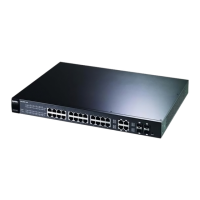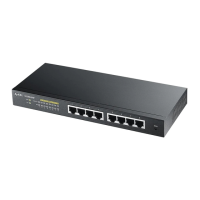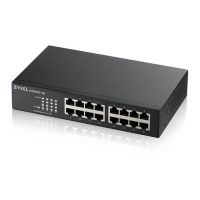Chapter 21 Monitoring
GS1500-24P User’s Guide
144
Click Monitoring > Logging > Logging Setting in the navigation panel to
display this screen. This screen can enable you to sends logs to the RAM, Flash
memory or an external syslog server.
Figure 69 Monitoring > Logging > Logging Setting
The following table describes the labels in this screen.
Table 49 Monitoring > Logging > Logging Setting
LABEL DESCRIPTION
Logging Target Use the columns on the right to select the types of system events
each logging target should record. Select:
• Error - to record system failures, such as events which will cause
the Switch to malfunction and events such as invalid user input in the
web configurator.
• Warning - to record non critical errors on the Switch. The Switch
will continue to function when warnings are recorded.
• Info - to record regular system events, such as configuration
changes or logins.
• Debug - to record events which can be helpful for engineering
debugging of the Switch’s function. This field is not recommended to
track as it creates many messages not helpful to typical users.
Delete RAM and Flash: Click CLEAR to purge all logs in memory.
Delete: Click DELETE to remove the syslog server.
Apply Click Apply to save your changes to the Switch.
Server IP Enter the IP address in dotted decimal notation of the syslog server
you want to add.
Port Specify the UDP port for sending log messages to this server. Typically
port 514 is used with syslog.
Add Click Add to save the syslog server entry to the Switch.

